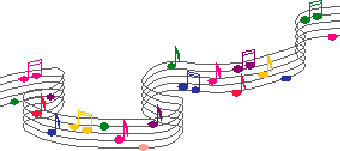Vivaldi 'Summer'
Click here to download word document
Click here to view 3rd movement analysis
Click here to download 3rd movement
Background
Born in Venice in 1678 and died in 1741
Father was a violinist in the orchestra at St Mark's Cathedral
Ordained in 1703 at the age of 25
Known as a red priest
Main work in his life - in Osepedale delle Pieta (Hospital of Pity or Compassion) which was an institution for orphaned and illegitimate girls.
Taught young girls to play music and composed concertos for them.
Also worked in Teatro Sant' Angelo (Opera theatre)
Wrote over 600 concertos, Italian operas
- The 'Founder' of ritornello form, as well as the 3 movement Fast-Slow-Fast concerto form.
- Also 'Founder' of Programmatic music.
Vivaldi's Four Seasons
- Dedicated to Count Graf Wenzel von Morzin of Bohemia
- Set of 4 Solo Concertos for violin, small string orchestra and basso continuo.
- Part of a larger collection of 12 called Il cimento dell'armonia e del'invention, or The Contest of Harmony and Invention op. 8
- Published in Amsterdam in 1725
1st Movement Allegro non molto
Section Description Key and Cadence Tutti 1 A .Beneath the blazing sun's relentless heat men and flocks are sweltering Ritornello theme: syncopated motif. 2 ascending sequences with Ta tititi motif.
Pines are seared
Descending scalic motif used in imitation between the Solo Vln, 1st ,2nd Vln and Vla, BC. Ritornello theme returns in the 1st and 2nd vlns for 5 bars and is repeated an octave lower.
G minor Imperfect Cadence
Flat IIb (Neapolitan Sixth) Chord
Perfect Cadence
Solo 1 B. The cuckoo loosens his voice/ Allegro Solo Vln playing repeated G (3 bars). Motif is shortened to 3 bars and played a tone higher.The next phrase is further shortened to 1 1/2 bars, semitone higher.
The Bird Sings
Motif is derived from the Solo theme 1 with changing intervals, emphasising the pitches of the triads. The movement of the different notes depict the singing of the cuckoo. BC accompanies with dotted rhythm motif.
G minor Tutti 2 Tutti continues the Solo theme 1 motif for 3 bars. The ritornello theme returns. G minor Perfect Cadence Solo 2 C. And soon the sweet songs of the Turtledove is heard Solo Theme 2 (Turtledove) by Solo Vln, leaping 2nds and 4ths. Tonic Pedal in BC. Interrrupted by semiquaver triplets in the ripieno vlns (representing the breeze).
The Finch Sings
Solo Vln plays only. Demisemiquaver Motif with leaps of 4ths alternated with trills.
G minor bypasses Eb major Tutti 3 D. Zephyr stirs the air Semiquaver triplet motif in the Vlns accompanied only by the Vla. 2 bar repetition. Triplet motif changed to dotted rhythm. 2 bar descending sequences, in terraced dynamics. (Indicates wind movement)
Borea (North Wind) sweeps them suddenly aside
Diminution of rhythm which creates driving momentum in the vlns. Forte dynamics. Running scalic motif with direction changes to indicate the wind directions. Vla and BC play pedal. After which, the motif changes to a pivot on the note D.4 bar repetition.
The pivot point changes afterward. 1 bar ascending and descending sequences follow. Vla and BC changes to dominant pedal.
Ritornello theme in a different key ( D minor).
G minor D minor
Perfect Cadence
Perfect Cadence
Solo 3 E. The weeping shepherd rembles at the menace of violent storm and what it may betide Disjunct Solo theme 3 (Weeping theme) played in 2 bar descending sequences with descending chromatic bass note by the BC.
Tonic pedal in C minor in BC under the weeping theme.
Ambiguous Tonal Center E minor - C minor - Eb major - G minor
German Sixth chord/C minor Perfect Cadence
Tutti 4 Storm: Demisemiquaver motif returns, pivoting on D with changing intervals. Dominant pedal in BC. Pattern of motif changes to descending seconds. Direction changes to indicate the wind direction. Ends with 4 bars of extended chord I (Repetition).
G minor Perfect Cadence
2nd Movement adagio
Section
Description
Key and Cadence
a 1
Adagio
F. Rest is denied his weary limbs by the fear of lightning and violent thunder and the furious swarm of flies and bluebottles. Solo Violin melody ( Long value notes : Ta -a- ai-ti Ta-a tai-ti teemri ta)depicts the Shepherd boy's weary limbs while the dotted rhythm creates the driving force of the swarm of insects.
G minor I-VIIb-V-I
Perfect Cadence
b1
Presto
Change of rhythm to relentless tiri tiri in (f ) to depict thunder. Monophonic Texture. G minor a2
Adagio
Solo Vln melody consists mainly of ta-i ti rhythm. Vlns repieno stated 'insect' theme in chord Ib and so on (see keys and cadences). G minor : Ib-IIb Bb major: Vb-I-IVc-I-Vb
b2
Presto
Ripieno plays 'thunder' theme for 1 1/2 bars in monophonic texture. Bb major a3
Adagio
Solo vln plays a 1 1/2 bar ascending sequence followed by a 1 bar descending sequence, accompanied by the 'insect' theme. Bb major: I C minor: VIIb-I
D minor:VIIb-I (D+)
G minor:
I-IV-V7d-V7b-VIIb/D- - V
Perfect Cadence
b3
Presto
'Thunder' theme by the ripieno. G minor a4
Adagio Presto Adagio
Solo Vln plays closing phrase accompanied by 'insect' theme. Interrupted by 'thunder' theme and 'insect' theme returns. G minor I-Vb-IVb-V7-VIIb/d minor-V-I
Perfect Cadence
Possible Long Essay Questions:
1. Describe Vivaldi's use of ritornello form in Vivaldi's 'Summer'.
2. Imagine that you are the violin soloist in Vivaldi's 'Summer'. Describe some of the interesting or difficult passages you have to play.
3. Describe the three movements of 'Summer' from Vivaldi's The Four Seasons concentrating on the descriptive elements of music.
4. Compare the 1st and 3rd movements of Vivaldi's 'Summer', concentrating on his use of ritornello form and instrumentation.

 Back to Baroque Music
Back to Baroque Music To Homepage
To Homepage